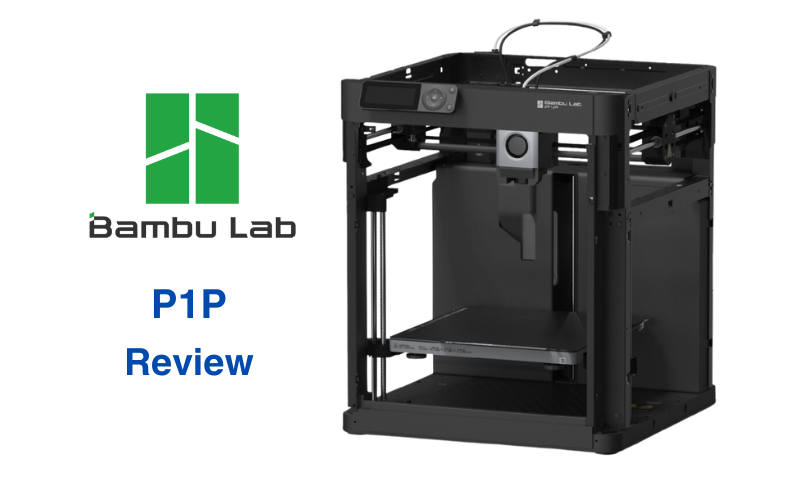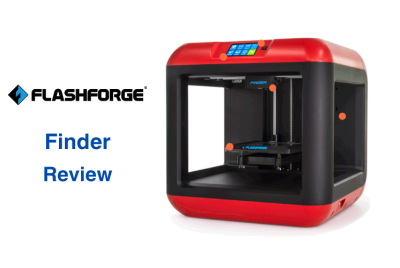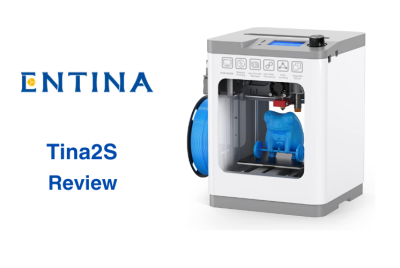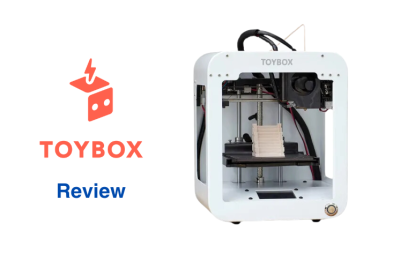Bambu Lab P1P Review
Bambu Lab entered the 3D printing scene in 2022, making an immediate impact with the release of their X1 series. This launch wasn’t just about introducing another 3D printer—it demonstrated their commitment to pushing the limits of speed and automation in desktop 3D printing. Despite being a relatively new company, Bambu Lab quickly gained recognition for its innovative approach, incorporating AI-powered calibration, multi-material support, and smart fail-safes designed to simplify the printing experience.
Their first flagship model, the X1 Carbon, showcased advanced features like lidar-assisted first-layer inspection and a hardened steel extruder for handling abrasive filaments. The introduction of the AMS (Automatic Material System) further expanded their appeal, enabling seamless multi-material printing with minimal user intervention. Their product line reflects a clear goal: to provide precision, speed, and convenience in a way that even users without extensive technical backgrounds can appreciate.
In this Bambu Lab P1P Review, we’ll focus on the P1P, which takes the core technology of the X1 series and repackages it into a more streamlined, cost-effective design. We’ll break down its design, features, and performance to see how it fits into the growing ecosystem of Bambu Lab products and if it meets the needs of makers looking for a capable, accessible 3D printer.
Design and Build Quality
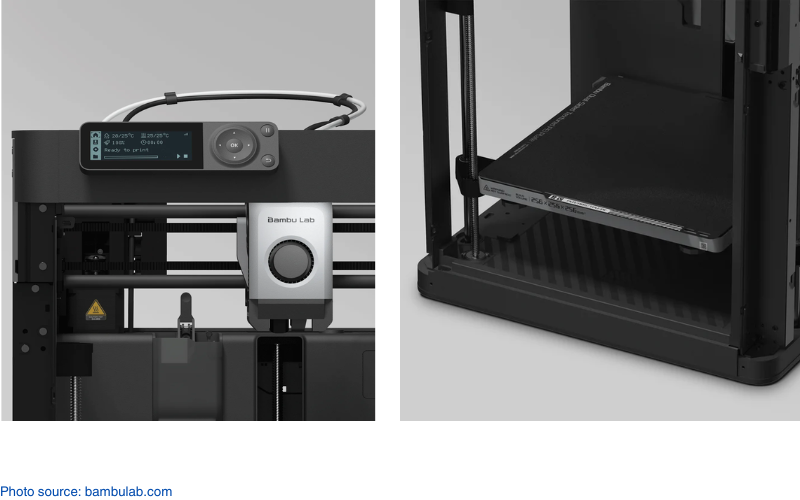
The Bambu Lab P1P has a different look compared to most 3D printers—it arrives with open sides and a minimalist frame that almost seems unfinished at first glance. But that’s part of its appeal. The open design invites users to get creative by printing their own side panels. Bambu Lab even provides 3D files to make customizing the printer easy, so you can add a personal touch right from the start.
The frame is sturdy enough to handle its high-speed printing without wobbling, thanks to its CoreXY motion system and metal construction. It’s compact, measuring 386 × 389 × 458 mm, but still offers a build volume of 256 × 256 × 256 mm—plenty of space for most projects. At 9.65 kg, it’s light enough to move around but feels solid when set up.
While the P1P keeps things simple with a control pad instead of a touchscreen, it doesn’t cut corners where it matters. It features an all-metal hotend that heats up to 300°C, meaning it can handle materials like PLA, PETG, and TPU with ease. However, since the frame is open, printing with materials like ABS or ASA may require an upgrade kit to avoid warping issues. The built-in Wi-Fi makes remote printing through the Bambu Handy app or Bambu Studio software a breeze. You don’t need to be near the printer to send print jobs or check on progress.
The P1P’s design may seem basic at first, but if you enjoy adding something you can make your own, the P1P’s modular setup will feel like a perfect fit.
Key Features and Specifications
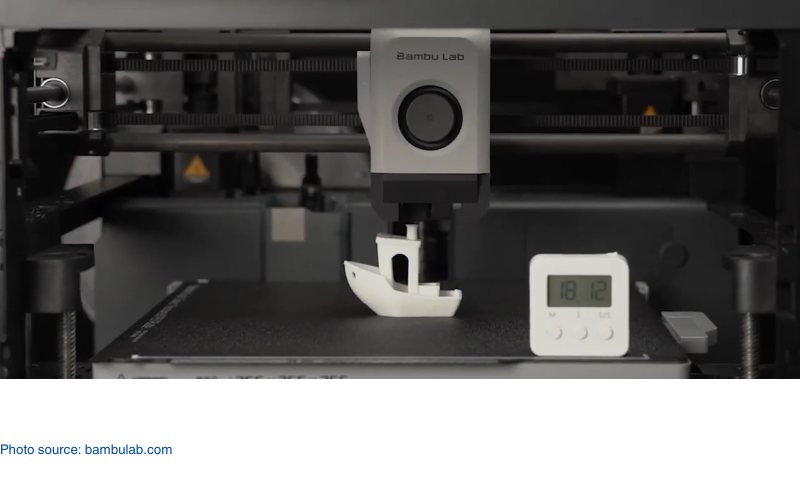
| Key Features | Specifications |
|---|---|
| Fast Printing Speeds | Build Volume: 256 × 256 × 256 mm³ |
| Automatic Bed Leveling | Nozzle Size: 0.4 mm stainless steel |
| Active Vibration and Extrusion Compensation | Hotend Temperature: Up to 300°C |
| Multi-Material Compatibility | Filament Diameter: 1.75 mm |
| Customizable Panels | Max Bed Temperature: 100°C |
| All-Metal Hotend | Max Tool Head Speed: 500 mm/s |
| Upgradeable to P1S | Acceleration: 20,000 mm/s² |
| AMS Ready | Chamber Camera: 1280 × 720 resolution, 0.5 fps (for timelapse) |
| Supported Filaments: PLA, PETG, TPU, PVA (ideal); PA, PC, ABS, ASA (with enclosure) |
Bambu Lab brings together speed, flexibility, and customization in the P1P. Its CoreXY motion system can reach speeds of 500 mm/s with acceleration up to 20,000 mm/s². This helps it zip through prints without losing quality. The automatic bed leveling sensor takes care of aligning the bed, so you don’t have to worry about failed prints due to uneven layers. The active vibration and extrusion compensation also help keep prints smooth, even at high speeds.
The all-metal hotend heats up to 300°C, giving you the option to work with materials like PLA, PETG, and TPU. If you want to print multi-color or multi-material designs, the AMS module can load up to four spools at once. You can even expand it to handle 16 spools with extra AMS units.
The open-frame design isn’t just for looks—you can customize it by printing your own side panels using Bambu Lab’s downloadable files. For higher-temperature materials like ABS or ASA, upgrading to the P1S adds an enclosure and better cooling to prevent warping.
With its combination of smart features and upgrade paths, the P1P handles everything from fun home projects to larger, more complex print jobs.
Comparisons
Bambu Lab P1P vs Creality Ender-5 S1
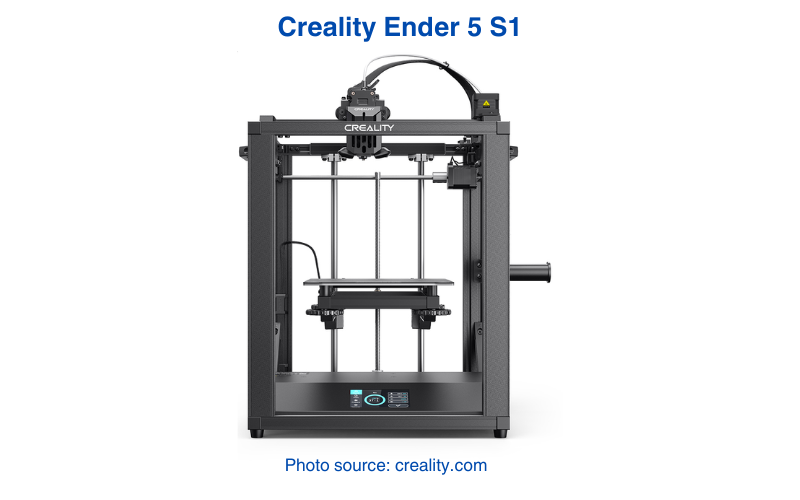
The Bambu Lab P1P and Creality Ender-5 S1 are aimed at different types of users. The P1P focuses on speed and customization, while the Ender-5 S1 sticks to a more traditional setup.
- Speed and Motion System: The P1P’s CoreXY motion system can hit speeds of 500 mm/s with 20,000 mm/s² acceleration. The Ender-5 S1 maxes out at 250 mm/s, so it’s noticeably slower. If you’re printing big projects, the P1P’s speed can save a lot of time.
- Customization: The P1P has an open frame with customizable side panels that you can 3D print yourself. The Ender-5 S1 has an enclosed cube-like design that helps with heat retention, but you don’t get the same personalization options.
- Multi-Material Support: With the AMS add-on, the P1P can handle multi-color and multi-material printing, managing up to 16 spools with extra modules. The Ender-5 S1 doesn’t have built-in support for multi-material printing.
- Ease of Use: The Ender-5 S1 comes with a touchscreen for on-printer controls, while the P1P sticks to a simple control pad but makes up for it with app-based control through Bambu Handy and Bambu Studio for remote printing.
Bambu Lab P1P vs Prusa i3 MK3S+
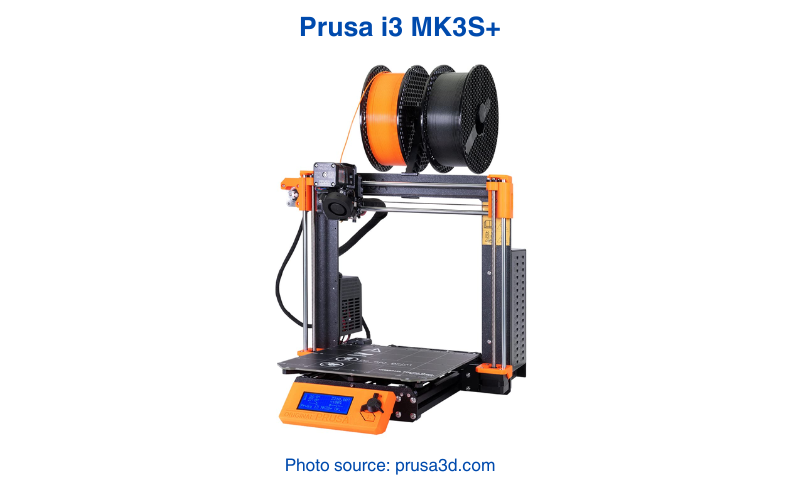
The Bambu Lab P1P and Prusa i3 MK3S+ both deliver great print quality, but they go about it in different ways.
- Speed and Stability: The P1P can print up to 500 mm/s, while the MK3S+ maxes out at 200 mm/s. The P1P’s CoreXY setup helps it reach full speed faster and stay stable, making it better for faster, larger prints.
- Customization: The P1P’s open frame lets you print and swap out your own side panels, giving it a unique look. The MK3S+ sticks to a more traditional, enclosed design with fewer customization options.
- Material Compatibility: Both printers handle PLA, PETG, and TPU well. The MK3S+ can handle ABS and other high-temp materials without any upgrades, while the P1P needs the P1S upgrade kit to handle those tougher filaments.
- Control Options: The MK3S+ has a built-in interface for direct control, while the P1P leans on Wi-Fi and app-based controls. If you prefer to manage everything remotely, the P1P’s setup makes it easy. But if you like using physical buttons and a screen, the MK3S+ might feel more familiar.
Real World Applications
- Prototyping and Design: The Bambu Lab P1P’s speed makes it great for creating prototypes and functional parts quickly. Its fast acceleration helps cut down wait times, so you can test and tweak your designs without long delays. With a build volume of 256 × 256 × 256 mm, there’s enough room for both small components and larger models, making it a solid fit for design projects of all kinds.
- Educational Use: The P1P’s quick setup and simple controls make it a good pick for classrooms. Students and teachers can get prints going without much fuss, and the AMS add-on can bring lessons to life with multi-color prints. The open-frame design also gives students a chance to see how the machine works and even customize it, adding a hands-on learning element.
- Home Projects: If you enjoy DIY projects, the P1P’s customizable panels and range of supported materials make it a fun tool for home use. You can print everything from organizers to repair parts or decorations. Plus, with upgrade options like the AMS and an enclosure, you can adapt it for more complex prints as your projects evolve.
- Cosplay and Props: For cosplay makers, the P1P’s fast print times and decent build volume are a huge bonus when printing large costume pieces or detailed props. The AMS add-on also lets you experiment with multi-color designs to bring more detail and flair to your creations.
Final Notes
The Bambu Lab P1P brings together speed, customization, and upgrade potential in a practical and user-friendly way. Its CoreXY motion system and fast acceleration make it a solid choice for anyone who wants quick, high-quality prints without long wait times. The open-frame design gives users the freedom to print their own side panels, making the printer more personal. For those who want to do more, the AMS add-on handles multi-color and multi-material printing, while the P1S upgrade kit adds an enclosure and improved cooling for higher-temperature filaments.
Compared to other 3D printers like the Creality Ender-5 S1 and Prusa i3 MK3S+, the P1P stands out for its speed and flexibility. The Ender-5 S1 focuses more on its sturdy frame and simple controls, and the MK3S+ handles higher-temperature materials well without upgrades. But the P1P’s combination of fast performance, app-based controls, and creative customization options makes it a unique choice for users who like to experiment and build out their setup.
You can use the P1P for everything from prototypes and classroom models to DIY parts and cosplay props. It’s a capable machine that adapts as your projects get more complex, built for users who enjoy taking on bigger challenges.

